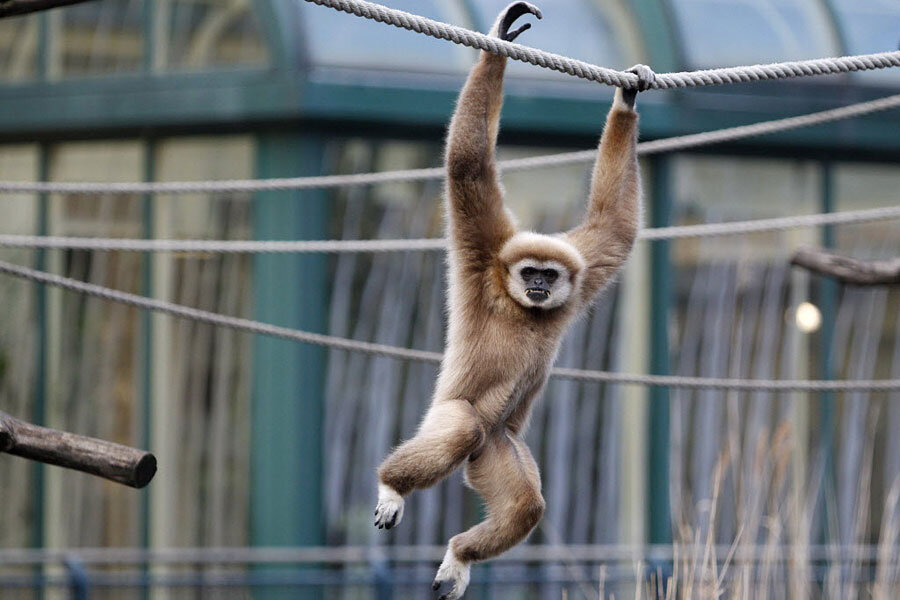Scientists unveil gibbon genome, reveal secrets of our endangered ape relatives
Loading...
| Washington
Gibbons - the small, long-armed tree swingers that inhabit the dense tropical forests of Southeast Asia - have become the last of the planet's apes to have their genetic secrets revealed.
"We now have whole genome sequences for all the great apes and, with this work, also the small apes - gibbons," said Jeffrey Rogers, a primate genetics researcher at the Human Genome Sequencing Center at Baylor College of Medicine in Houston.
"This provides new information and insight into the history of the human genome, in evolutionary terms," added Rogers, who participated in the study published in the journal Nature.
Scientists on Wednesday unveiled the genome of gibbons, a close cousin of humans genetically but still the most distantly related to people among the apes.
The study found the genetic underpinning for the fantastic ability of gibbons to swing from tree to tree at speeds of up to 35 mph. It also detected an extraordinary number of structural changes in their DNA. Such changes can be troublesome in other species, including causing cancer in people, but do not seem to have been problematic during the evolution of gibbons.
Among the great apes, the chimpanzee genome was published in 2005, followed by the orangutan in 2011 and the gorilla and the bonobo in 2012.
The gibbon genome fills the gap between Old World Monkeys like macaques and baboons and the great apes, said the study leader, primate genomics expert Lucia Carbone of the Oregon Health & Science University and the Oregon National Primate Research Center.
Carbone said other studies have estimated the gibbon genome as 96 percent similar to people, compared with 98 percent for chimpanzees, our closest ape cousin.
Gibbons are critically endangered. One species, the Hainan gibbon, has only 20 individuals left. Carbone expressed hope the genome will help forge conservation strategies, for instance to assess genetic diversity in wild populations and identify ones that are most at risk.
These omnivores forage for food in the high forest canopy, eating fruit, leaves, bird eggs, insects and birds. Gibbons are monogamous, forming long-term pairs. Individuals from their 19 species range from roughly 11 pounds to 26 pounds.
Gibbons rapidly swing through the forest canopy under tree branches using their arms rather than running on the top of branches. Their arms are 1-1/2 times as long as their legs and they are bipedal when they descend from the trees.
The study found genes involved in growth and development of the arms and shoulders that have undergone unique changes compared with humans and other apes.
The researchers analyzed the genome of a female northern white-cheeked gibbon named Asia and sequenced the genomes of eight other individuals. They estimated gibbons diverged from the other apes 16.8 million years ago.
Unlike other apes and humans, gibbons have experienced a lot of structural changes in their DNA known as "chromosomal rearrangements." These can be disruptive and can lead to disease like chronic myeloid leukemia in people.





